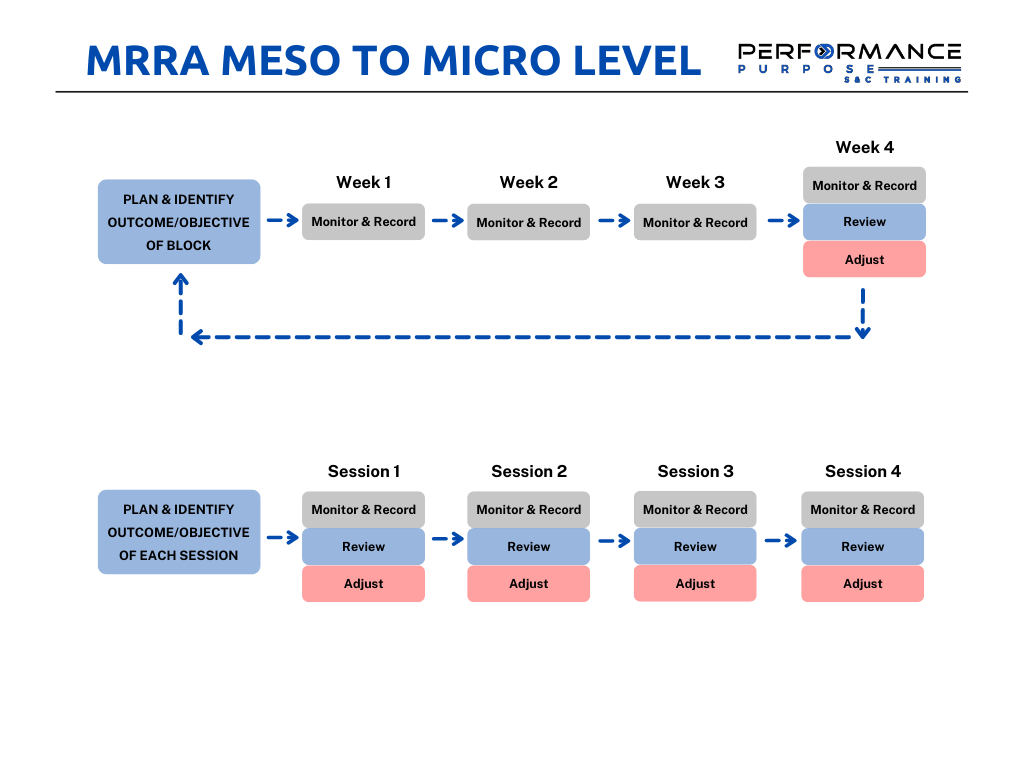Agile Periodization Approach: Part 3 - Considerations
This is Part 3 of my three-part series on Agile Periodization, if you have not read Part 1 and Part 2 of my series, I have provided the links below.
Click here to read “Agile Periodization: Part 1 - The Concept”
Click here to read “Agile Periodization Approach: Part 2 - Phase Planning”
Introduction
By now, I hope that you have grasp the concept and principles of agile periodization fairly well through this article series. Individualization of training programs can come in multiple degrees (individual athlete, specific sport and team environment). However, there are still multiple factors that must be considered. In this last part of the Agile Periodization Approach series, I have chosen the top three considerations that should be given more thought. These are not the definitive “top” considerations, more so a subjective outlook that I have found to be helpful in my experience of programming for athletes.
Individualization is making sure one is doing what it takes to reach satisficing potential while avoiding the downsides
- Mladen, 2018
Consideration #1: Monitor, Record, Review & Adjust
When a phase or program is complete, no matter how perfect the results were, it must undergo a process of revision. This is to re-identify the objectives set at the beginning of the program, see if the objectives were met or satisfied to a certain degree and understand what was beneficial and what was not. When we identify the cause and effect of such factors, we must adjust the stimulus we administer in account for the future program. This takes into consideration of the newly found experience and physical state the athlete has achieved through their time in training. Remember, there is no perfect program, there is only what is required right here and right now.
This is where the acronym MRAA can be used (yes I made up an acronym). MRRA stands for - Monitor, Record, Review and Adjust. Now this process can be done at all levels (micro, meso and macro level). To better explain the process of MRAA, I have included several flowcharts below giving a step-by-step and continual process that MRRA encompasses.
Consideration #2: Exercise Placement & Order
In Part 1 and Part 2 of this series, we discussed the importance of dosing multiple stimulus throughout the week/sessions to prevent the loss of training effects (Issurin, 2018). However, to ensure we get the most out of each quality, the order in which we place these exercises matter. To form an ideal training session, one must identify and order the exercise selection from most fatigable to least fatigable. This ensures that we are able to get the most out of each exercise modality used. Exercises that are focal towards speed, power, high velocities and maximal strength exercises should be prioritized at the beginning of the session and submaximal strength and hypertrophy work should be placed towards the latter half of the session.
Exercise order within a weekly scope is another factor that must be considered as well. The consideration of muscle groups used and the fatigue that follows will affect how an athlete will perform later that session or week. If an athlete’s focus that session is a variation of deadlifts that may result in fatigue of grip strength, maybe considering another grip-demanding exercise a couple days later or at the end of the training week. Let’s say you have plans of programming Front Squats, Romanian Deadlifts and Trap Bar Deadlifts into your two-day training week. Something to consider is maybe pairing Front Squats and Romanian Deadlifts within the same session as each lift puts emphasis on either anterior and posterior loading, then leaving the athlete to perform Trap Bar deadlifts on the second day of training. This ensures that we get the most out of loading/intensity of each lift and session without fatiguing the athlete too much.
The possibilities of creating a program are endless. It is like a child mixing and matching candies at a candy store. Dozens of possibilities and dozens of combinations but emphasis on one flavor may be preferred. That’s the same thing as performance training, context is key and it has to MAKE SENSE.
Consideration #3: What If Weekly Frequency Is An Issue?
For those that are not full-time athletes or do not have the time to invest in multiple days of training within the week, once a week sessions are a MINIMUM while coordination with sport practice or games. In this case, we MUST administer the qualities that the athlete cannot achieve from playing their sport. If the situation cannot be change (which it rarely can), we must change to fit the situation we are given. Minimum effective doses, selecting exercises that are the most “bang for your buck,” raising the ceiling and maintenance work are all strategies that can either maintain or improve physical qualities, even if it is improvement at a slow pace. Keep in mind, the progression of load and volume may be more so a linear progression as oppose to an undulating model. We may not be able to achieve everything in that one session throughout the week but keep in mind “One is better than none.”
Scratching the Surface
Periodization is free-form and should adapt to the situation it is given. Understand the principles that periodization is formed from and it can be applied to multiple circumstances. I hope by now you have an understanding of what forms the ideal training program for athletes, what is required and how we can get the most out of it.
If you have not read Part 1 and Part 2 of my series, click on the links below and subscribe and follow me on my social media for more content.
Click here to read “Agile Periodization: Part 1 - The Concept”
Click here to read “Agile Periodization Approach: Part 2 - Phase Planning”


